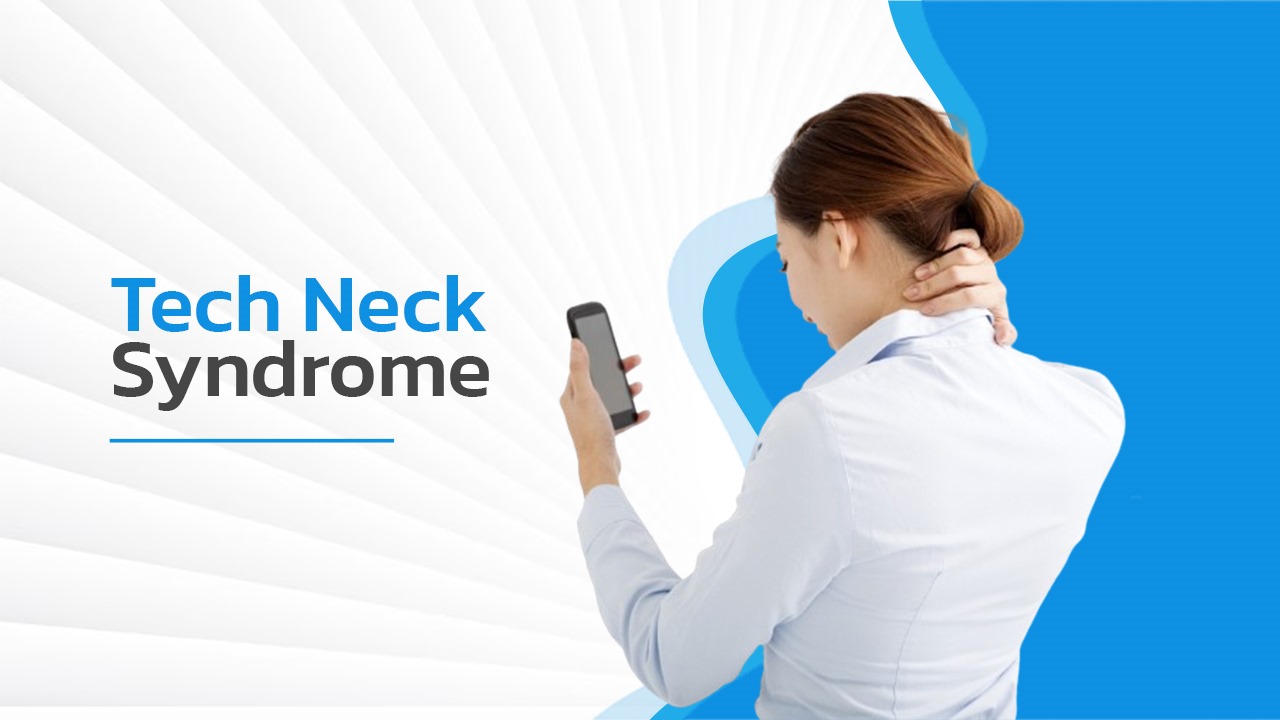
Know About Tech Neck Syndrome, Preventing Digital Strain
In today’s digital age, our lives are intertwined with technology. From the moment we wake up to the moment we go to sleep, we are glued to our screens. While technology has undoubtedly made our lives easier, it has also introduced a host of physical ailments, one of which is the “Tech Neck Syndrome.” The Spine Clinic is dedicated to providing you with essential information on how to recognize, prevent, and manage Tech Neck Syndrome, ensuring your digital life doesn’t come at the cost of your health.
What is Tech Neck Syndrome?
Tech Neck Syndrome, also known as Text Neck, is a repetitive strain injury caused by excessive use of mobile devices, tablets, and computers. It manifests as pain, stiffness, or discomfort in the neck, shoulders, and upper back, resulting from the prolonged forward head posture adopted while looking down at devices. Over time, this unnatural posture can lead to chronic pain, spinal misalignments, and even nerve damage.
These injuries, affecting the ligaments and muscles respectively, are caused by overstretching or tearing due to sudden movements, improper techniques, or overuse. Symptoms include pain, muscle spasms, and reduced flexibility.
Recognizing the Symptoms
The symptoms of Tech Neck can vary from mild to severe and include:
- Neck soreness and stiffness
- Sharp pain in the shoulders or upper back
- Headaches
- Reduced mobility in the neck and shoulders
- Tingling or numbness in the arms
The Long-Term Impact of Tech Neck
Ignoring Tech Neck symptoms can lead to more serious complications like:
- Degenerative disc disease
- Spinal arthritis
- Nerve compression
- Muscle imbalances
- Reduced lung capacity
- Difficulty breathing
If you experience any of these symptoms regularly, it might be time to evaluate your screen time and posture.
Preventive Measures
Prevention is key when it comes to managing Tech Neck Syndrome. Here are some effective strategies to help reduce your risk-
Adjust Your Screen Height
Ensure that your screen is at eye level, whether you’re using a desktop, laptop, or handheld device. This prevents you from bending your neck forward or looking down for prolonged periods.
Take Frequent Breaks
Follow the 20-20-20 rule: every 20 minutes, take a 20-second break to look at something 20 feet away. This helps reduce eye strain and gives your neck a break from being in the same position.
Improve Your Posture
Be mindful of maintaining a neutral spine position. Keep your shoulders back and down, and imagine your head being pulled up by a string to keep it aligned with your spine.
Strengthen and Stretch
Incorporate neck and shoulder stretches into your daily routine. Strengthening exercises for your neck, shoulders, and upper back can also help support good posture and reduce strain.
Limit Screen Time
Be conscious of the amount of time you spend on your devices. Set limits for yourself and take up activities that don’t involve screen time, especially before bedtime.

Managing Symptoms
If you’re already experiencing symptoms of Tech Neck, there are several ways to manage discomfort:
- Apply Heat or Cold: Heat can help relax stiff muscles, while cold can reduce inflammation and pain.
- Over-the-counter Pain Relief: Nonsteroidal anti-inflammatory drugs (NSAIDs) can help manage pain and inflammation.
- Physical Therapy: A physical therapist can provide targeted exercises and manual therapy to alleviate symptoms and improve posture.
- Ergonomic Adjustments: Invest in ergonomic furniture and accessories to support proper posture while working or using devices.
Conclusion
While technology continues to be an integral part of our lives, it’s essential to be aware of the physical impact it can have. By adopting preventive measures and being mindful of our posture and screen time, we can mitigate the effects of Tech Neck Syndrome. Remember, taking care of your spine and neck today will contribute to a healthier, more comfortable tomorrow. The Spine Clinic is here to support you on this journey, offering expert advice and care for your spine health. Let’s embrace technology responsibly, ensuring it enhances our lives without compromising our well-being.
